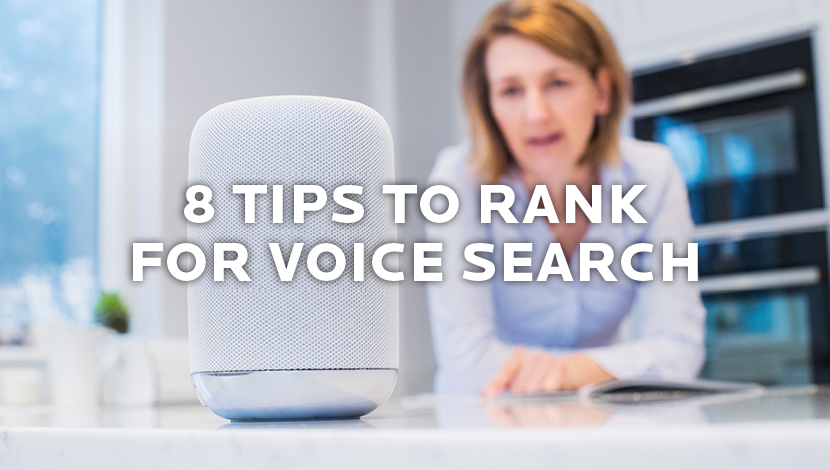

The rise of digital assistants is good reason to take another look at your search strategy. ComScore predicts that more than half of searches will be voice based by 2020.
The good news is that if you’re following SEO best practices, you’re on the right track. Seventy-five percent of voice search results rank in the top three positions on desktop.
There are nuances, however, based on the types of searches being done through voice and the unique ranking algorithm. Backlinko conducted a study on Google Home SEO results, which helps illustrate some of the differences.
Before you dive into optimizing for voice, we recommend considering where it fits within your marketing strategy. If you’re new to the concept, check out our intro to digital assistants post.
Here are our 8 tips to rank in voice.
- Make important information accessible.
Your address, phone number, hours, specials and other basic information should be easy to find. Make sure they are listed prominently on your site, as well as in spaces such as Google My Business, Bing Places for Business and Yelp.
- Answer questions conversationally.
Voice search supports conversational experiences, making them a good place for long-tail search optimization. Try to answer questions your prospective customers typically have. You can find content ideas by talking to customer service or your sales team. Tools like Answer the Public or Google related searches are also useful.
Unlike desktop searches where including keywords in the title tag is important, Google seems to comb the entire page for voice search results, making FAQ pages a smart strategy.
- Encourage reviews.
Mobile voice queries are three times more likely to have local intent. Reviews not only help you rank for local search, but they also can provide valuable information that customers are searching for.
- Be clear and concise.
The typical spoken voice search result is only 29 words in length and written at a ninth-grade reading level. Remember that results need to be easy to pronounce and easy to understand without a visual.
- Security matters. Use https:
When you use https, all communications between the browser and your site are secure. Google favors secure sites 70% of the time in voice results. In desktop, that number is just 50%.
- Be mobile friendly.
These days, it probably goes without saying, but do make sure your site is mobile friendly. The majority of voice search queries are on a mobile device. If you’re in doubt, you can run a simple check with Google’s mobile-friendly test.
- Improve site speed.
The average voice result loads in 4.6 seconds. That’s 52% faster than the average page. To check your site’s load time, try Google PageSpeed Insights.
- Improve domain authority.
Domain and page authority are search engine ranking scores that predict how well a site or a specific page will rank. They’re based on machine learning calculations that use dozens of data points.
As opposed to desktop search where page authority matters, Google voice search seems to prioritize the domain as a whole. To improve domain authority, use a good internal linking strategy and create quality content to encourage other authoritative sites to link to yours.
Bonus Tip:
What’s good for the customer is good for the spider.
A positive user experience has been the go-to strategy for improving SEO for a while now. The tips above all support a good experience on your site for your customers, which tells search engines that your site is worth ranking. If you’re not sure what kind of experience your customers are having, or where your SEO ranks, contact us and we can help with a UX and SEO audit to get you moving in the right direction.
